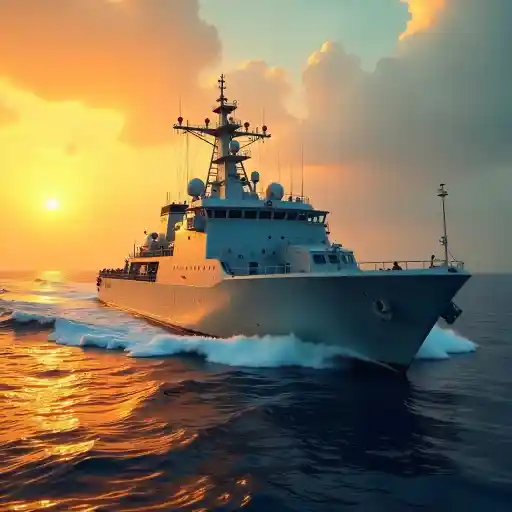The Philippine government is exploring the idea of building India’s Next-Generation Offshore Patrol Vessels (NGOPVs) locally. Reports suggest this move is meant to strengthen the Philippine Coast Guard’s capacity at sea, especially in the West Philippine Sea where maritime security has become a pressing concern.
This growing interest is part of the broader defense cooperation between India and the Philippines, where India’s reputation for reliable and affordable defense equipment has already gained ground.
India’s NGOPV Program
The NGOPV is a multi-role vessel currently being built by major Indian shipyards—Mazagon Dock Shipbuilders Limited (MDL) for the Coast Guard, and Goa Shipyard Limited (GSL) along with Garden Reach Shipbuilders and Engineers (GRSE) for the Navy.
For the Indian Navy, contracts were signed in March 2023 for 11 ships. The keel-laying of the second and third vessels under this program was carried out in March 2025 at Ratnagiri, in the presence of senior naval officials, highlighting India’s shipbuilding push under Aatmanirbhar Bharat and Make in India.
The Coast Guard, on the other hand, signed its own contract in December 2023 for six vessels worth over ₹1,600 crore. The first of these ships began construction at MDL’s Nhava Yard in Mumbai in July 2025.

Technology and Design
Each NGOPV is about 117 meters long, displacing close to 3,000 tons. They are designed for endurance, capable of covering 5,000 nautical miles at a maximum speed of 23 knots. Equipped with AI-enabled maintenance systems, multipurpose drones, and integrated management systems, these vessels bring in a new level of sophistication.
They can operate helicopters and remotely piloted aircraft, expanding their surveillance and rapid-response capability. Advanced features like low-noise propellers, modern electronic warfare suites, and provisions for anti-smuggling and counter-terror missions make them versatile assets.
Why the Philippines Is Interested
For Manila, these vessels could serve multiple roles—coastal defense, surveillance, search and rescue, anti-piracy patrols, and protection of offshore energy infrastructure. Their endurance and ability to stay at sea for weeks without refueling make them particularly suited for long deployments in contested waters.
The Philippines is also looking at the possibility of not just buying but manufacturing or assembling the NGOPVs locally. This could involve training in maintenance, repair, and overhaul, and pave the way for technology transfer and job creation in its shipbuilding sector.
Armed for the Future
The NGOPVs that interest the Philippines are designed with serious firepower: a 76mm Oto Melara gun, AK-630 close-in weapon systems, decoy launchers like the Kavach, and mine warfare capabilities. With helicopter support built in, they can serve as flagships for the Philippine Coast Guard, raising its operational profile.
Growing India-Philippines Defense Ties
This is not Manila’s first defense deal with New Delhi. The Philippines was the first country to buy the BrahMos supersonic cruise missile from India, signaling deepening trust in Indian defense exports.
Recent visits by Indian Navy ships to Manila in August 2025, including INS Delhi and INS Shakti, reinforced the momentum. Talks during these visits centered on widening cooperation in maritime security across the Indo-Pacific.
A Strategic Convergence
The NGOPV proposal fits neatly into both countries’ priorities: the Philippines’ defense modernization program and India’s ambition to export high-quality, cost-effective defense solutions. If it moves forward, this collaboration could redefine the Philippine Coast Guard’s capabilities and add another layer to the strategic partnership between the two democracies in the Indo-Pacific.
